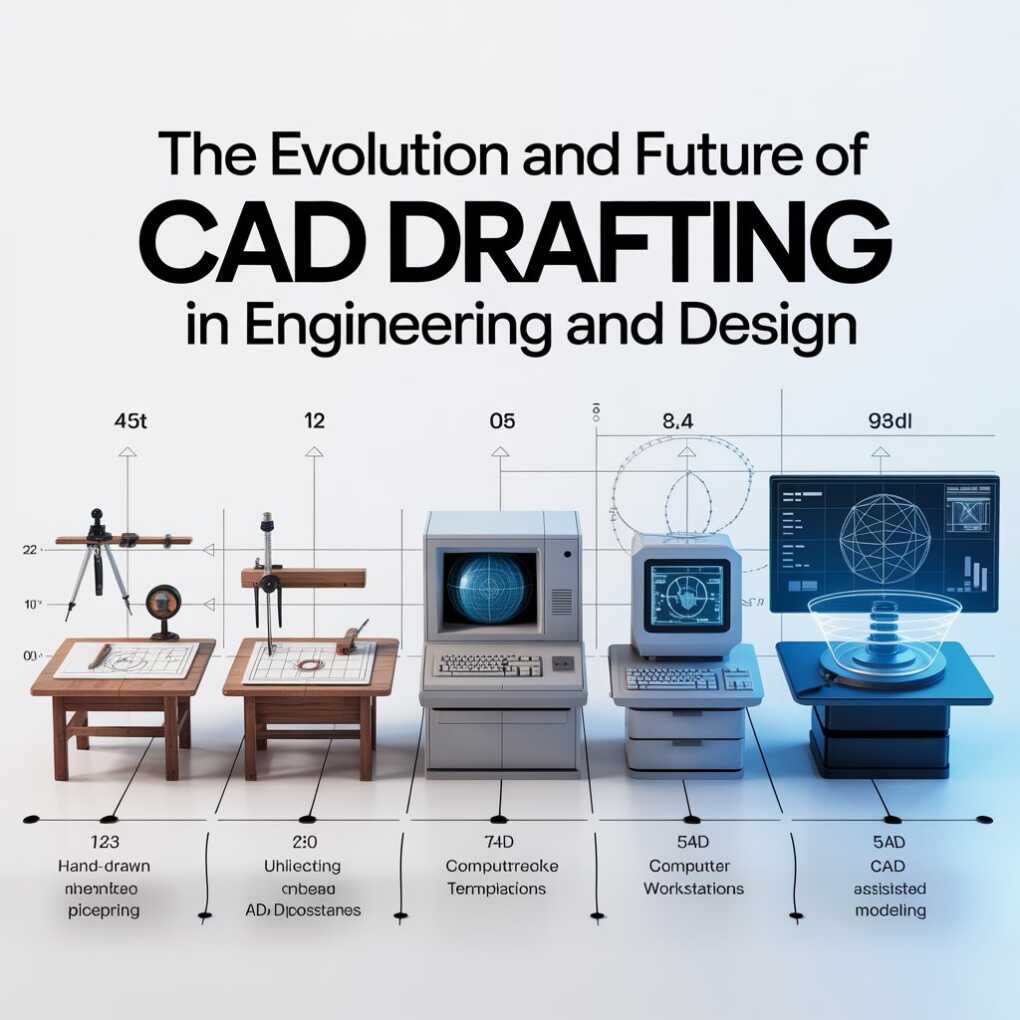Design has continuously been at the center of human innovation, shaping the entirety from historical shapes to modern engineering marvels. Over the years, the gadgets and strategies utilized in drafting have advanced notably. What took hours of manual work on paper with rulers and compasses is now handled digitally with speed and precision. For every architect, engineer, and Construction Estimator, this digital shift has been transformative. Among the technological upgrades, Computer-Aided Design (CAD) drafting stands as one of the most transformative.
Today, CAD isn’t the excellent layout tool—it’s the usage of the pressure of innovation that maintains redefining industries that encompass form, engineering, production, and indoor layout. As the generation progresses, the location of CAD drafting will come to be increasingly important. To genuinely recognize in which direction it’s headed, it’s important to find out how CAD drafting is shaping its destiny.

From Manual Drafting to Intelligent Design
Traditional drafting relied on manual strategies that required superhuman power, accuracy, and modern-day information. However, it often leaves room for errors and has become inexperienced for large or complicated responsibilities. CAD drafting revolutionized this device through the use of digitizing format, allowing specialists to create especially accurate drawings and models effectively.
The shift changed into greater than a technological development; it changed the manner in which duties were conceptualized, advanced, and taken. Today, CAD isn’t always tremendous for proper 2D drawings; however, it is also awesome for three-dimensional models that simulate real-world conditions. This leap has set the inspiration for the future of a sensible format.
Enhanced Accuracy and Efficiency
One of the quality blessings of CAD drafting is its precision. In industries wherein even a millimeter might also need to make a difference, accuracy is non-negotiable. CAD software program software utility automates dimensions, scaling, and alignment, minimizing human errors and ensuring exactness.
Efficiency is the key benefit. Tasks that, at the same time as required, took weeks of manual drafting can now be finished in hours. Quick revisions, reusable templates, and automatic capabilities make CAD Services a time-saving asset. As the future software program integrates extra advanced skills, the general ordinary performance of layout techniques will experience an outstanding boom, assisting specialists with entire tasks rapidly without compromising on amazing.
Collaboration in a Digital World
The future of the format is collaborative, and CAD drafting makes this load tons less complicated than ever. Instead of converting bodily blueprints, organizations can properly convert virtual files now. Cloud-based CAD solutions allow real-time collaboration, wherein multiple experts can view, touch upon, and replace designs simultaneously.
These collaborative surroundings reduce miscommunication and guarantee that architects, engineers, and customers stay aligned. With globalization, the usage of duties across borders in the near future will continue to shape how agencies work together.
Integration with Emerging Technologies
What actually sets CAD gadgets aside is their compatibility with precise superior generation. CAD drafting now integrates seamlessly with Building Information Modeling (BIM), bearing in mind clever designs that encompass useful visuals but also resources, advanced performance, and lifecycle costs.
Additionally, CAD files can be used right now in 3-D printing, allowing the appearance of accurate prototypes and fashions. Augmented reality (AR) and virtual reality (VR) are also being paired with CAD to provide immersive reports, letting clients walk through virtual homes earlier than production starts. This integration with the developing generation makes CAD drafting a vital tool for the future of the format.
Sustainability and Smarter Solutions
The worldwide community is shifting at the muse of sustainability, and layout plays a pivotal function in that journey. CAD drafting lets in inexperienced practices through the use of simulations that allow looking at energy use, common regular universal fabric performance, and environmental effect earlier in obligations that circulate production.
By permitting designers to test inexperienced answers digitally, CAD reduces waste and permits the creation of smarter, more sustainable systems. As the call for sustainable formats grows, CAD will continue to play an essential role in constructing a greener future.
Professional Expertise and Industry Growth
While the CAD software program utility is robust, its actual price is determined at the same time as it is combined with expert records. Skilled drafters and architects understand how to use CAD devices to optimize duties, ensure compliance with hints, and rework revolutionary thoughts into beneficial realities.
This is why many businesses depend upon specialized drafting services and Construction Estimating Services to cope with their layout dreams. Outsourcing to professionals permits companies to get access to top-tier statistics, advanced technology, and cost-effective solutions. These offerings are not pretty, beautiful, or correct; however, they additionally lost the inner organizations’ reputation because of innovation and customer engagement. In the future, as duties become increasingly complex, the demand for specialized data in CAD drafting will find upward thrust.
Real-World Applications Shaping the Future
CAD drafting already plays a pivotal role in a couple of industries, and its programs will increase even further in the coming years:
- Architecture: From skyscrapers to greenhouses, CAD enables architects to lay out robust, beneficial, and visually appealing systems.
- Engineering: Precise mechanical components and complicated systems are superior with accuracy that guarantees stylish, smooth,c commonordinary ordinary trendy universal overall performance and reliability.
- Manufacturing: CAD drafting streamlines product format, prototyping, and production techniques, lowering expenses and mistakes.
- Interior Design: Detailed room layouts, lighting simulations, and fixture placement assist in creating sensible and appealing areas.
These examples show that CAD drafting isn’t always really shaping the winning—it’s laying the foundation for a destiny wherein the format is smarter, quicker, and more sustainable.
Final Thoughts
The evolution of layout is inseparable from technological improvement, and CAD drafting has been at the leading edge of this evolution. What started as a possibility for guide drawings has grown into a complicated platform that powers collaboration, innovation, and sustainability across industries.
